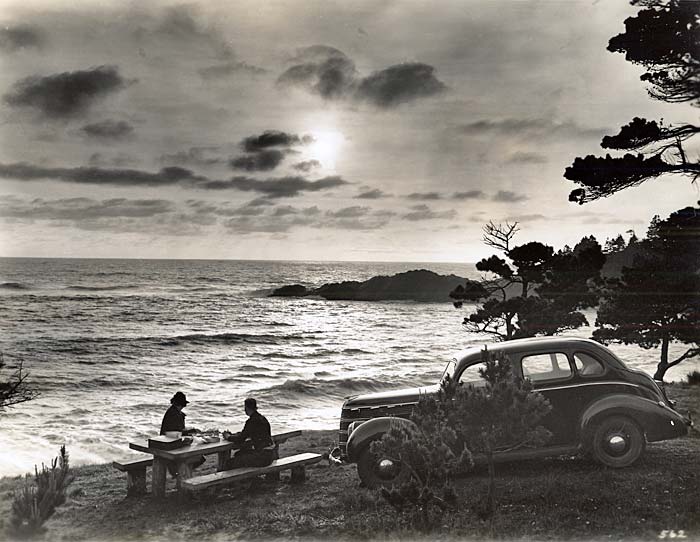 Sunset at Depoe Bay State Park (562). Enlarge image.
Sunset at Depoe Bay State Park (562). Enlarge image.
Setting the Mood
The year is 1940 and you are driving with your family to Astoria to begin a trip down the Oregon Coast. Along the way, you listen to the car radio, laughing at the antics of Fibber McGee and Molly, tapping your fingers to the latest Big Band hit, and shaking your head at war news from Europe. You worry that America may need to get involved eventually.
Stopping at a roadside restaurant, you pull a newly published book from your bag. Called "Oregon: End of the Trail," it is a detailed and engaging guide to the state's culture, history, and geography. Of immediate interest is the section that traces the very trip you will soon be making: down the Oregon Coast Highway (U.S. 101) from Astoria to the California border.
You've read in the newspapers how the guide was prepared by the Oregon office of the Federal Writer's Project. Established under President Franklin D. Roosevelt's "New Deal," the project provided work for writers and other "white-collar" workers suffering the impacts of the Great Depression. Like the Oregon office, state Writer's Project offices around the country have produced (or are hurrying to finish) similar guides.
As you scan the book's pages, you are reminded how recently the
Oregon Coast Highway was completed: eight years ago. According to the guide,
the long isolation of the pre-highway era left a legacy in coastal towns: "a certain individuality." You note how that individuality is captured in the guide's accounts of yodelers at Mohler, fish races at Depoe Bay, and Red Head Round-ups at Taft.
You also note the book includes a wealth of information about industry, agriculture, and tourist attractions along your intended route. You are especially drawn to the fascinating bits of history and local lore that capture the character of coastal communities.
You close the guide and return to your car more eager than ever to reach Astoria and begin the adventure.
Contents of the Exhibit
 Harris State Park near Brookings (1793). Enlarge image.
Harris State Park near Brookings (1793). Enlarge image.
As in the imaginary journey described above, text from Oregon: End of the Trail (1940 edition) is ready to point the way as you start your online tour of the Oregon Coast.
Our version includes revisions in punctuation and spelling, as well as changes designed to assure greater accuracy in historical references.
The accompanying photographs are from a collection of the Oregon Department of Transportation, Highway Division, now maintained
by the Oregon State Archives. Individual photos in the collection are undated, but were taken around 1940, and thus depict the Coast as it appeared to writers of Oregon: End of the Trail. When possible images have been placed close to associated text.
We hope you enjoy your trip down the Oregon Coast!